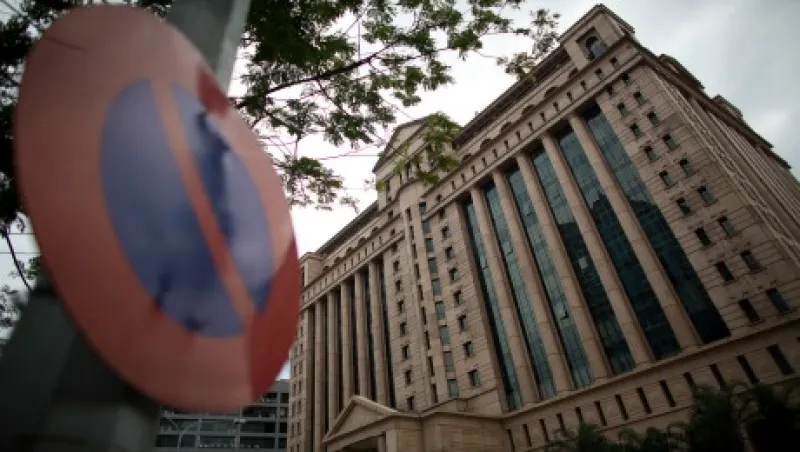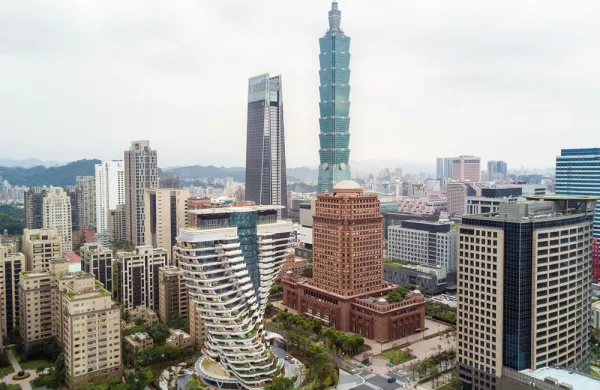As CEO of Malayan Banking for most of the past five years, Abdul Wahid Omar led Malaysia’s largest bank on a rapid growth spree by building out a network across Southeast Asia and expanding into investment banking. The results were impressive. Maybank grew revenues by more than 56 percent on his watch and posted an eight-fold increase in net income.
Now, Abdul Wahid is working to engineer a similar growth spurt in the Malaysian economy. Appointed in June as a minister in the office of Prime Minister Najib Razak, Abdul Wahid is spearheading efforts to help the government achieve its goal of making Malaysia a developed economy by 2020.
In New York to headline a recent investor conference earlier this month, Abdul Wahid insisted that Malaysia is well placed to sustain solid growth despite headwinds in the global economy that have buffeted emerging-markets economies this year. The government’s 2014 budget, introduced in parliament last month, is intended to strengthen the government’s finances and ensure that Malaysia doesn’t fall victim to twin deficits on the budget and current account, like India and Indonesia, he said.
In his budget Najib committed the government to finally introducing a 6 percent goods and services tax, a value-added tax first proposed seven years ago, in 2015. He also announced cuts in sugar and fuel subsidies.
The subsidy reduction “sends a direct signal to the market” of fiscal discipline, Abdul Wahid says in an interview. The budget measures aim to lower the deficit to 3.5 percent of gross domestic product next year and 3 percent in 2015 from 4 percent in 2013.
The three major ratings agencies have warned in recent months that high deficits could put Malaysia’s credit rating (A3 by Moody’s Investors Service and A- by Standard & Poor’s and Fitch Ratings) at risk. Moody’s welcomed the budget announcements but noted that even after the changes the budget deficit and subsidy levels would remain above precrisis levels.
The Malaysian economy has picked up steam lately, following a slowdown ahead of the country’s tightly contested election back in May. Najib’s Barisan Nasional coalition won reelection despite losing the popular vote to the opposition People’s Alliance of Anwar Ibrahim. The government announced Friday that growth accelerated to 5 percent in the third quarter, from 4.3 percent in the second and 4.1 percent in the first, thanks to strong exports and domestic consumer spending.
Large infrastructure investments and growing links within the ten-country Association of Southeast Asian Nations, which intends to form a free-trade area by 2015, will support continued growth, Abdul Wahid contends. Malaysia’s $137?billion in foreign exchange reserves, its well-capitalized banks and its deep domestic capital market should help insulate the economy from any global turbulence, he adds; “We don’t have that many corporations exposed to dollar debt.”
The push to develop regional champions is an increasingly important driver of the economy, officials and executives agree. Tajuddin bin Atan, CEO of Bursa Malaysia, notes that the exchange’s top 30 listed companies now derive 45 percent of their revenues from abroad, mostly in Southeast Asia. Twenty-three percent of companies boast annual revenues of more than 500 million ringgit ($156 million). “The quality of the companies is getting stronger,” he says.
Initial public offerings also seem set to pick up after a lull that followed a $3.1 billion IPO by Malaysia’s palm oil monopoly last year. In October, UMW Oil & Gas Corp., a provider of offshore drilling services, raised 2.4 billion ringgit in the country’s biggest initial public offering yet this year, hot on the heels of a 2.24 billion-ringgit IPO by Westports Holdings. Bin Atan predicts a continued rebound in IPO activity next year. “It won’t match 2012, but it will definitely be better than 2013,” he says.
Regional expansion is driving growth at Maybank. The group’s Bank Internasional Indonesia grew lending by 19 percent in the first three quarters of this year, and investment banking arm Maybank Kim Eng is driving strong growth in fee income, notes Abdul Farid Alias, who succeeded Abdul Wahid as CEO in June.
The bank aims to generate 40 percent of its revenues from outside of Malaysia by 2015, says Farid. It won’t reach that goal on organic growth alone, but acquisition targets are hard to find, especially in Thailand, the biggest gap in Maybank’s ten-nation network. “To invest in a bank in Thailand is not easy,” he acknowledges.
Still, Maybank is generating strong double-digit growth in deposits and corporate lending in Singapore, where its focus on midsize companies is paying off. “Our business in Singapore has a lot more room to grow,” Farid says.
For more about Asean, please read Institutional Investor's feature: “Asean Economies Aim to Avoid the Mistakes of European Integration”.






